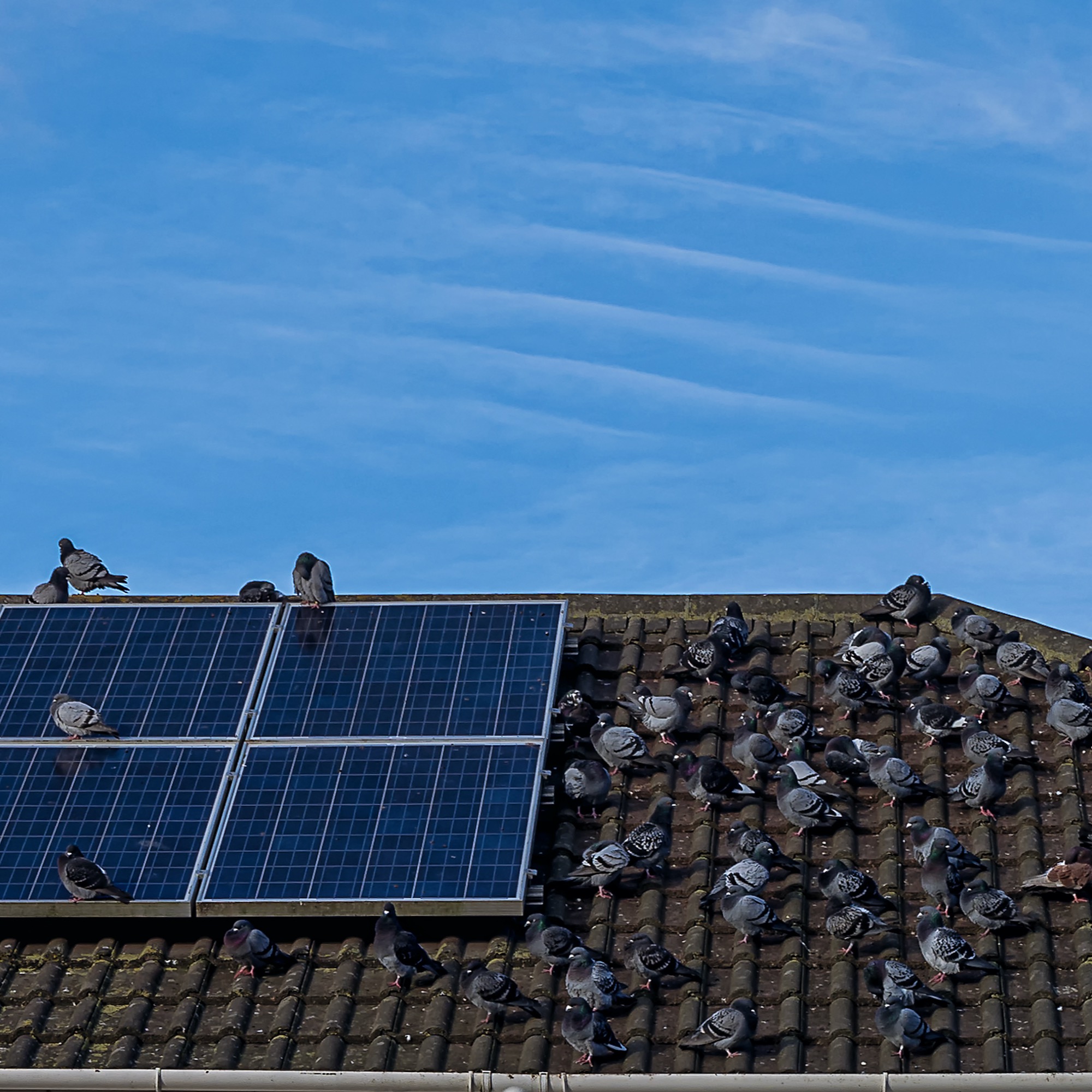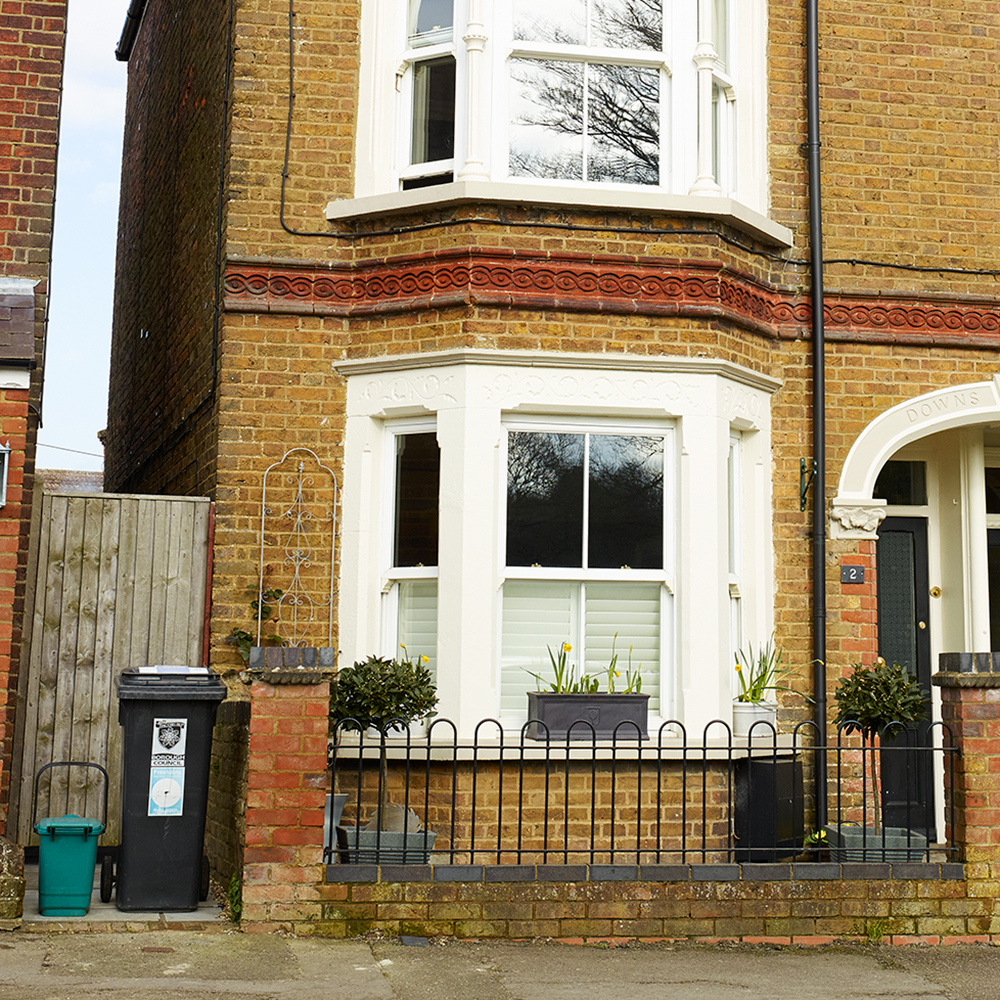A guide to pigeon proofing solar panels and why you should
A pigeon-proofed solar panel is an efficient one, so you can save power and money with these helpful tips

Having solar panels is one thing but maintaining them is a whole next step that also needs to be taken into consideration. One thing you may not have considered just yet is to get pigeon proofing solar panels.
Solar panels are a great way to take the pressure off your energy bills. You can harness the power of the sun to generate electricity to power your home. In fact, in most cases you can also sell excess power back to the grid to actually make money. In the long run you should find that the panels cover their own cost and make you profit.
But all that is dependent on them working efficiently. Since solar panels need to let in as much sunlight as possible to work, having a clean and clear panel is very important. So pigeon mess is a big problem. But this issue goes beyond just blocking light, as you'll see below.

Why is it important to pigeon proof solar panels?
Pigeons are one of the biggest solar panel problems that owners face. Here's why it shouldn't be taken lightly.
1. Your panels will generate less power
Let's not beat around the bush – pigeons equal pigeon poo. And the most obvious problem with pigeon poo is that it will block the solar panel from getting the sunlight it needs to generate power. Less power means you're literally losing money. You won't have as much to sell back to the grid, or to cover your energy needs in your home.
In terms of the effect on the solar panels cost, according to Josh at The Eco Experts, 'you can lose as much as 25% of your electricity from dirty panels'. So if you take the average sell-back value of £125 per year, you could lose over £31 if you don't start pigeon proofing solar panels.
2. Your panels could be damaged permanently
Pigeon poo is acidic and therefore corrosive. That means if a pigeon poo isn't cleaned right off your panels it can cook in the sun. This causes more damage to your panels beyond mere light blocking. This can leave your panels discoloured and even damaged, permanently.
Sign up to our newsletter for style inspiration, real homes, project and garden advice and shopping know-how
Then there's under the panels. Whether you have solar power for sheds or on your main house, pigeons love an open and high space. They love to nest under the panels, which is a big problem.
Nesting pigeons, being homing birds, will keep coming back and can multiply and cause more problems. You may find more pigeons join in this new hotspot. They can peck at wiring and electricals under the panels. And since their nests are bound together with a mix including faeces, this too can corrode electrical equipment and potentially damage your solar panels. Also, the food and presence of the birds can lead to other creatures making homes there like squirrels, rats, insects and other critters.
So, all that in mind, it's super important to not only get rid of any pigeon would-be residents but to also make sure no more come by again by pre-emptively pigeon proofing solar panels.

How to pigeon proof solar panels, step by step
There are a few ways to get pigeon proofing solar panels to stop the pests returning and potentially damaging your panels and affecting your energy production levels.
1. Install a solar panel mesh
One of the most efficient ways to start pigeon proofing solar panels is to use a wire mesh. This goes around the outer edge of your panels, reaching down below them to the roof tiles and stretching up above them a few inches. This should be enough to stop any creatures getting in under your solar panels to make a new home for themselves. It should also mean access to the top of the panel is far more difficult too.
Once pigeons, and other creatures, realise there is nowhere to settle on your roof they'll move on, leaving the space safe and secure. It also means they shouldn't return, making sure the chances of pigeon poo from those flying over is kept to a minimum also.
2. Install spikes
Spikes may sound like a cruel and drastic method but in reality they're not. Modern options aren't sharp but protrude awkwardly from the roof. This is just enough to make it too uncomfortable for pigeons to land and hang around, but not harsh enough to cause any actual harm. It also means these can be fairly low-profile so you wouldn't notice them too much from ground level, if at all.
By using spikes for pigeon proofing solar panels you also keep the bottom of your panel visually accessible so you can carry out an annual inspection to make sure the panels are in good working order. These also allow for access to the panels themselves with your cleaning device, so keeping them clear should be as easy as without them installed.
3. Keep a clean area
This might seem obvious but pigeons are attracted to food and food waste. That means if there are any sources of potential feed for them, then your home could become an attractive place. Without the food, they won't come exploring and are less likely to find the panels in the first place.
Keep your waste in solid bins. Ensure your pet food and treats haven't found their way outside, and sweep up after any outdoor entertaining. It can all help to keep away pests and protect your solar panels.

How to clean up solar panels after a pigeon infestation
If pigeons are already attacking your solar panels, or you've had a problem in the past and want to overcome it, there are clean-up methods.
Cleaning your solar panels regularly is important. As Josh of The Eco Experts says, 'There are plenty of professionals whose main skill is cleaning solar panels.'
'One of these companies will charge you £100 to £150 for their services. And when you see the aesthetic and financial benefits this produces, you’ll see why it’s worth doing.'
Before that, you can have a go at the job yourself following these steps.
1. Wet the area
The first step is to make sure the mess is not going solid and more sticky. This can make it harder to get off and be more damaging, not to mention blocking the light more. Reach for your hose – a high-pressure one if you have that option – and aim high to get the jet of water onto the panel while you stay safely on the ground.
Use the height of the falling water to add impact so that the water itself may break up the pigeon poo on impact. If you're lucky this step could be enough to clear the offending mess. If not, move on to step two.
2. Take a break
While the initial barrage of water may not have dislodged the pigeon poo, it will have had an effect. This will help to add moisture to the mess to soften it. So after that first wetting, take a ten-minute break. This will give the water time to work its way into the mess so as to soften and loosen it from the panels.
3. Return and repeat
After the ten minutes, return with the hose once again and do the same wetting treatment. Use the high fall of the water, changing the angle of impact, to work underneath the poo so that it may come loose or break apart enough to slide off.
If this doesn't work, take another ten-minute break and go again. If you have access to hot water to your hose pipe then this can work even better. And if you somehow have soapy warm water you can get through that pipe, this is ideal. If none of that works, step four may help.
4. Get physical
If the hose based attempts have failed and you still aren't ready to pay a professional to go up and do the job, there is another option. Get yourself an optical pole with a sponge at the end – which you should have anyway for annual solar panel cleaning. The reason this wasn't used up front is that the poo needed to be loosed first. Also the mess will likely damage the sponge so that it needs to be thrown away.
Wet the mess first then, using warm and soapy water on the sponge, work it into the offending area until the mess is cleared away. Be sure the sponge is non-abrasive though, to avoid damaging the panels in the process.

As a veteran tech journalist of over two decades, Luke knows what makes a gadget tick but is also well aware of what you want to read about when doing your research. He has worked in this world for over 20 years and loves testing, reviewing and working with brands on new gadgets. Luke consults for many tech companies helping them create new gadgets. Expect concise words on everything from smart home tech and power tools to solar panels, cars, smartphones, speakers and plenty more besides.